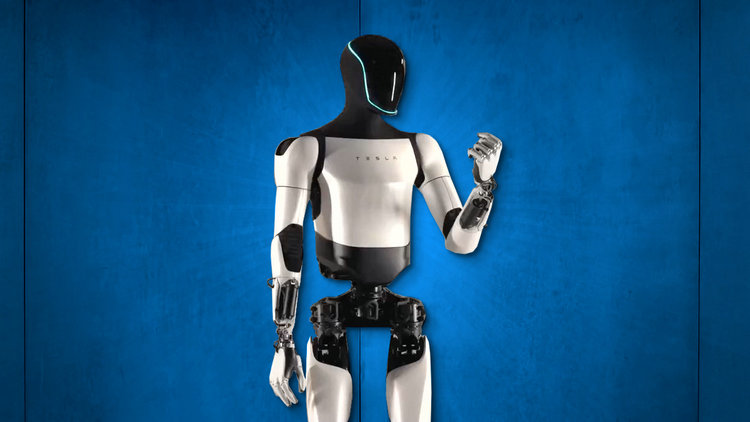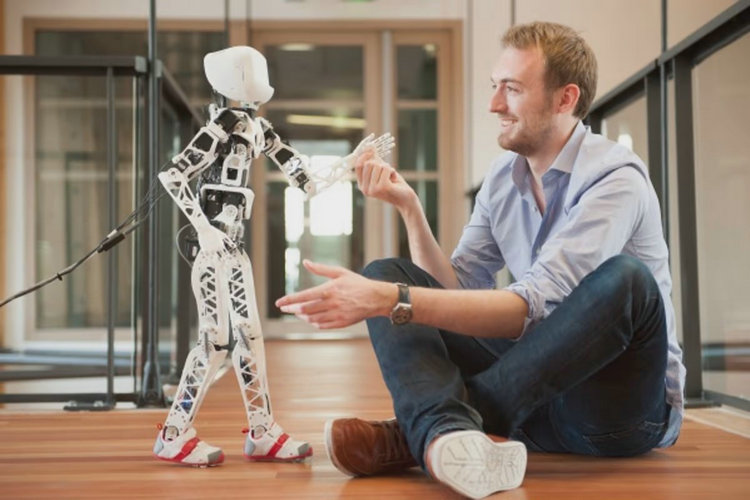
At the 2025 Chinese Spring Festival Gala, 16 Unitree H1 humanoid robots, named "Fuxi," performed alongside dancers from the Xinjiang Arts Institute in a creative fusion dance program called YangBOT. The performance captivated national audiences and sparked heated discussions, showcasing China's cutting-edge robotics technology to the world.
The H1 is the world's first full-sized, electrically driven humanoid robot capable of performing a standing backflip. It is equipped with AI-powered full-body motion control, high-precision 3D LiDAR SLAM for autonomous positioning and navigation, multi-agent cooperative planning, advanced networking solutions, and AI-driven motion control.
In recent years, breakthroughs in generative AI have fueled a surge in the humanoid robotics industry. Tech giants like Huawei, Xiaomi, Tencent, Tesla, and Unitree have all invested heavily in this field. According to industry reports, China's humanoid robot market grew to 3.91 billion yuan (≈$550 million) in 2023, marking an 85.7% year-over-year increase. It is projected to continue its rapid growth, surpassing 20 billion yuan (≈$2.8 billion) by 2026.
Humanoid robots require materials with corrosion resistance, heat resistance, insulation, lightweight properties, and environmental sustainability. The skeletal structure forms the foundation for robotic movement, with applications in exoskeletons, spines, arms, and legs. Common materials include steel, aluminum alloys, magnesium alloys, carbon fiber, and high-performance polymers. Among them, eight types of polymers and composites are gaining particular attention.
At the beginning of 2024, Tesla introduced the Optimus-Gen2 humanoid robot, which was 10 kg lighter and 30% faster than its predecessor. A key enabler of this weight reduction was PEEK (Polyether Ether Ketone) - a lightweight, high-performance polymer widely used in humanoid robot manufacturing.

The Poppy humanoid robot, designed by France’s Ensta ParisTech and Flowers Lab, is fully 3D-printed, except for its motors and electronics. It employs Selective Laser Sintering (SLS) technology using polyamide (PA) as the primary material.

SoftBank's NAO humanoid robot is primarily constructed from PC/ABS plastic, polyamide, and carbon fiber-reinforced thermoplastics.
Covestro produces Makrolon® polycarbonate and Bayblend® (PC+ABS, PC+ASA blends), which are commonly used in humanoid robot manufacturing.
Polyphenylene Sulfide (PPS) is a high-performance thermoplastic with outstanding heat resistance, electrical insulation, self-extinguishing properties, and wear resistance.
Compared to metals or ceramics, PPS composite materials can reduce weight by up to 60% while offering lower overall costs and minimal electromagnetic shielding, making them ideal for intelligent robotics.
Exoskeleton components (joints, protective plates, power center casings)
Gears and bearings
Humanoid robots have significantly more joints than traditional industrial robots—Tesla's Optimus has 40 joints. Each joint requires a servo motor, making these motors critical components in humanoid robots.
Specialty engineering plastics, particularly LCP (Liquid Crystal Polymer), are widely used in servo motor connectors and other electronic components. LCP materials offer excellent fluidity, dimensional stability, high heat resistance, and superior high-frequency dielectric properties, making them ideal for precision electronic parts and high-frequency signal connectors.
Carbon Fiber Reinforced Plastics (CFRP) are composites made by curing carbon fiber with resin (primarily epoxy resin). CFRP is lightweight yet incredibly strong and rigid, making it a preferred material in industries such as sports equipment, industrial products, aerospace, and automotive manufacturing.
Silicone-based materials are widely used in automotive, aerospace, military technology, and electronic devices due to their soft texture, biocompatibility, temperature resistance, radiation resistance, and non-toxicity.
In soft robotics, silicone's flexibility, transparency, and biocompatibility make it an ideal material for robotic hands that perform delicate tasks while safely interacting with humans. For example, Soft Robotics has developed robotic grippers made of silicone, used in packaging, assembly, and food processing industries.
According to Changhong Hi-Tech, their TPE materials are widely used in humanoid robots due to their excellent insulation, lightweight properties, recyclability, and anti-static performance. TPE also provides a unique soft-touch and temperature-sensitive feel, making it an ideal choice for bionic skin materials.
Many manufacturers use TPE to produce robotic skin and torsion-resistant low-voltage power cables for robotic arms. At room temperature, TPE exhibits rubber-like elasticity, but at high temperatures, it plastifies into a processable polymer, making it a cost-effective and medically safe alternative.
According to market research forecasts, the humanoid robot industry is expected to maintain high growth rates in the coming years, with market expansion accelerating between 2025 and 2027.
As demand rises, the selection of advanced polymer materials will play a crucial role in enhancing robotic performance, durability, and energy efficiency. With innovations in lightweight, high-strength, and high-temperature-resistant materials, humanoid robots will continue to evolve, becoming smarter, more agile, and more integrated into human life.